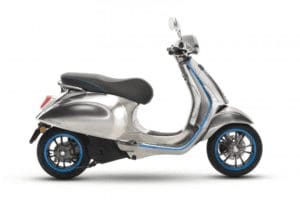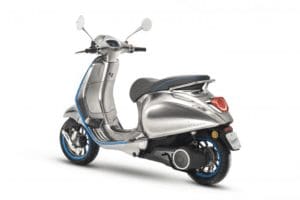Our friends at Motociclismo Italy have spent some with Antonio Cappellini, Vespa’s Product Development Manager, to find out about the new Vespa Electtrica.
How long have you been working on this electric Vespa?
“The project started in 2016, but was born as an evolution of the experiences acquired by the Piaggio Group since the days of hybrid MP3 – which in fact have evolved further developing hybrid and electric engines, not least that on Wi-Bike “.
What were the most difficult technical steps?
“The challenge was to develop small, integrated, performing, high energy density and efficient automotive components, as well as reliability. In our case, in order to guarantee the customer some features (for example, a helmet compartment) we have dedicated components. The lithium battery has integrated control electronics, and the engine-vehicle management system is in fact an all-in-one device, in which several functions have been integrated. All components have also been developed to maximise efficiency.”
What kind of electric motor do you use?
“Permanent magnet brushless synchronous, mounted close to the wheel and coupled with a cascade of gears, which allows a high torque density. In addition to reverse gear, this Vespa also has the KERS (Kinetik Energy Recovery System) function, which actually manages the recovery of kinetic energy, which is usually lost, at all stages of deceleration “.
Why has the performance of a 50 cc?
“We think that the best potential of a purely electric mobility, especially in relation to the state of the art lithium batteries, are now related to light vehicles, typically metropolitan, and can be driven with the a moped licence.”
What auxiliary engine for the X version?
“It’s a 100 cc and 2 valve 4T, with a maximum power of 2 kW, designed to be extremely quiet”.
How many batteries are there, what capacity do they have in kWh and what voltage?
“The lithium battery is unique, with a nominal voltage of 48V – kicking out about 86 Ah and 4.2 kWh for the full electric version – and about 42 Ah and 2 kWh for the X version”.
And autonomy?
“The difference in terms of autonomy between the Power and Eco modes is about 30% in the full electric version, with Eco mode offering up to 100 km at a constant speed. The X version offers up to 200 km thanks to the maintenance of the engine charge auxiliary”.
How about a 125 cc version?
“Technically you can have it – but for higher performance, and a speed of 100 kmh, the lithium battery (in terms of energy density, weight, volume, cost, recharge times, autonomy) should be evaluated. In my mind, hybrid technology goes better with vehicles in this class “.
To read the full article on Motociclismo Italy, click HERE.






